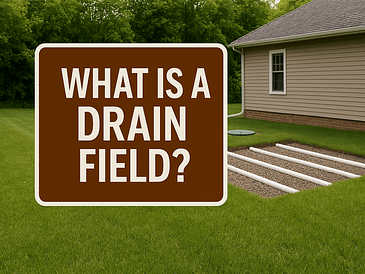Taking care of your home’s septic tank may not be the most glamorous task, but it is undoubtedly one of the most crucial aspects of homeownership. Neglecting septic tank maintenance can lead to costly repairs, unpleasant odors, and even health hazards. Whether you are a new homeowner or have been living in your house for years, understanding how to properly maintain your septic system is essential.
In this comprehensive guide on important septic tank maintenance, we will delve into the basics of septic tank systems and why regular maintenance is necessary. We will discuss common problems that can arise from neglecting your septic system and provide practical tips on how to keep it running smoothly. By following our expert advice, you can ensure a trouble-free septic tank system that protects both your home and the environment.
The Basics of Septic Tank Systems
Septic tanks are an integral part of many residential properties, silently working to manage household wastewater. Understanding the basics of how these systems function is crucial for every homeowner. A septic tank system consists of two main components: the septic tank itself and the drainage field. The septic tank acts as a holding chamber where solid waste settles and undergoes decomposition, while the effluent is released into the drainage field, where it is further treated by soil bacteria.
Properly designed and maintained septic tank systems function efficiently for years, ensuring a safe and hygienic environment. It’s important to consider factors such as tank size, soil composition, and location when installing a new system or assessing an existing one. Regular inspections by certified professionals will help identify any potential issues early on, allowing for timely repairs or maintenance.
Understanding Septic Tank Problems
Septic tank systems are essential for proper waste management in homes and properties not connected to municipal sewage networks. However, these systems can experience a variety of problems that require prompt attention. Understanding the common issues that can arise with septic tanks is crucial for maintaining a healthy and functional system.
One of the most common problems with septic tanks is clogging or blockage. This can occur due to excessive accumulation of solid waste, such as grease, oil, or non-biodegradable items. When these substances build up in the tank, they can obstruct the flow of wastewater and cause backups or even seepage into the surrounding soil.
Another issue to be aware of is drain field failure. The drain field is responsible for filtering and dispersing the treated wastewater from the septic tank into the soil. If this area becomes overloaded with excess water or if tree roots invade the pipes, it can lead to system failure and potentially contaminate groundwater sources.
Additionally, septic tank odors can indicate problems within the system. Foul smells emanating from drains or near your yard could be a sign of a leak or improper functioning of your septic tank.
Signs of a Septic Tank in Need of Maintenance
Recognizing the signs that your septic tank requires maintenance is crucial for preventing costly and inconvenient system failures. One telltale sign is a foul odor emanating from the drains or surrounding area. If you notice an unpleasant smell, it may indicate a buildup of waste or a potential leak in the septic tank.
Another clear indication of a septic tank in need of attention is slow draining sinks, showers, or toilets. If you observe water backing up or taking longer than usual to drain, it could signify blockages within the system. Additionally, gurgling noises coming from your plumbing fixtures may indicate an issue with your septic tank. These noises occur when air bubbles try to escape through partially clogged pipes.
One should also be mindful of lush and overly green patches in the yard above where the septic tank is located. Excessive grass growth may signal leakage and nutrient-rich wastewater reaching the soil surface. Lastly, if you notice any sewage backups or standing water in your yard, it is imperative to address these problems promptly as they can pose health risks and potentially damage your property.
Step-by-Step Guide: Septic Tank Cleaning
Keeping your septic tank clean and properly maintained is crucial for the overall health and functionality of your septic system. Regular cleaning helps prevent backups, odors, and costly repairs. Follow these step-by-step instructions to ensure a thorough and effective septic tank cleaning:
1. Locate the access point: Start by locating the access point to your septic tank. This is usually a concrete lid or manhole cover buried in your yard. Use caution when removing it to avoid injury.
2. Pump out the solids: Once the access point is open, enlist the help of a professional septic tank pumping service or use specialized equipment if you are experienced in doing it yourself. Pump out all the accumulated solids from the tank.
3. Inspect for damage: While emptying the tank, inspect its interior for any signs of damage or cracks that may need repair. Addressing these issues promptly can prevent more extensive problems down the line.
4. Clean filters and effluent screens: Many septic tanks have filters or effluent screens that help trap small particles before they enter the drain field. Remove these filters/screens and clean them thoroughly using water before placing them back.
5. Rinse and refill: After completing all necessary cleaning tasks inside the tank, rinse it thoroughly with water to remove any remaining debris or sludge. Refill it with water until it reaches its normal operating level.
Note: It’s worth mentioning that se
The Importance of Regular Septic Tank Pumping
Regular septic tank pumping is an essential maintenance task that cannot be overlooked. Neglecting this crucial aspect of septic tank care can lead to a host of problems, including unpleasant odors, slow draining sinks, toilets backing up, and even costly repairs. By investing in regular septic tank pumping, you are not only preserving the lifespan of your system but also ensuring the health and well-being of your household.
Septic tanks function by collecting and treating wastewater from your home. Over time, solid waste accumulates at the bottom, forming a layer known as sludge. This sludge can fill up a significant portion of the tank capacity if left unattended. Regular pumping removes this accumulated sludge, preventing it from clogging drain lines and causing potential backups in your plumbing system. Moreover, timely pump-outs allow for proper inspection of the tank’s condition and identification of any repair needs before they escalate into major issues.
DIY vs. Professional Septic Tank Maintenance: Which is Right for You?
When it comes to maintaining your septic tank, you may find yourself faced with the decision of whether to tackle the task on your own or seek the assistance of a professional. Both options have their merits, but it’s important to consider various factors before making a choice that suits your needs.
Opting for a DIY approach can be empowering, as it allows you to take control of the maintenance process and potentially save some money. However, it’s crucial to possess the necessary knowledge and skills required for effective septic tank maintenance. This includes understanding the proper techniques for cleaning and inspecting your system, as well as having access to appropriate tools and equipment.
Common Mistakes to Avoid in Septic Tank Maintenance
When it comes to septic tank maintenance, there are certain mistakes that homeowners often make, inadvertently jeopardizing the health and functionality of their septic systems. One common mistake is neglecting regular pump-outs. Your septic tank needs to be pumped out at least every three to five years, depending on its size and usage. Failing to do so can lead to a buildup of solids, causing blockages and potentially costly damage.
Another mistake to avoid is flushing non-biodegradable items down the toilet or sink. Many people mistakenly think that items like baby wipes or sanitary products are safe for disposal in their septic system. However, these items do not break down easily and can clog your pipes and septic tank over time. It’s important to only flush toilet paper and dispose of other materials properly.
Preventative Measures for a Healthy Septic Tank System
Keeping your septic tank in good condition is crucial to avoid costly repairs and maintain a healthy environment. By implementing preventative measures, you can ensure the longevity and efficiency of your septic system.
Firstly, it is essential to monitor what goes into your septic tank. Avoid flushing non-biodegradable items such as wipes, sanitary products, or excessive amounts of paper down the toilet. These can clog the system and lead to backups and blockages. Additionally, be mindful of what gets washed down the drain in your kitchen. Grease, oil, and food scraps should never be disposed of through the sink as they can accumulate in the tank and disrupt its natural balance.
Troubleshooting: Dealing with Common Septic Tank Issues
Even with proper maintenance, septic tank issues can arise. However, armed with knowledge and a proactive approach, you can effectively troubleshoot and resolve common problems. One prevalent issue is a foul odor emanating from the septic system. This unpleasant smell can be caused by various factors such as a cracked or damaged tank, clogged pipes, or excessive organic waste buildup. To address this issue, start by inspecting the tank for any visible cracks or leaks. If found, contacting a professional to repair or replace the tank is necessary.
Another common problem is slow draining sinks and toilets. This may indicate a blockage in the pipes leading to or from the septic tank. To tackle this issue, first try using a plunger to clear any immediate obstructions. If the problem persists, it may require more extensive measures such as using an auger or seeking professional assistance. Regular pumping of your septic tank can significantly reduce the likelihood of blockages and prolong its lifespan.
Septic Tank Maintenance Tips for a Worry-Free Home
Keeping your septic tank in optimal condition is crucial for the smooth running of your household. By following these septic tank maintenance tips, you can ensure a worry-free home environment:
1. Mindful Water Usage: Conserving water not only helps the environment but also prevents unnecessary strain on your septic system. Opt for low-flow fixtures, fix leaky faucets promptly, and spread out heavy water usage activities throughout the week to avoid overloading the tank.
2. Proper Waste Disposal: Your septic system is not designed to handle certain substances like grease, oil, chemicals, or non-biodegradable items. Dispose of these materials in an appropriate manner to prevent clogs and damage to your system.
3. Regular Inspections: Schedule annual inspections by a professional to assess the condition of your septic tank and identify any potential issues before they turn into costly problems. This proactive approach will save you time, money, and headaches in the long run.
4. Regular Pumping: To maintain optimum functionality of your septic tank, it is recommended to have it pumped every 3-5 years (depending on household size). Regular pumping removes accumulated solids that can cause blockages and backups.
5. Landscaping Considerations: Be mindful of where trees and shrubs are planted near your septic system’s drain field. The roots can infiltrate pipes and disrupt their function. Planting grass instead allows better water absorption while preventing soil erosion
Conclusion
In conclusion, proper septic tank maintenance is not only essential for the smooth operation of your household plumbing, but it is also crucial for the protection of the environment and public health. By following the step-by-step guide to septic tank cleaning and scheduling regular pumping, you can ensure a worry-free home and prevent costly repairs in the future. Remember, maintaining your septic tank system is an investment in the longevity and functionality of your property. So, take pride in being a responsible homeowner and safeguarding both your well-being and our precious ecosystem.





